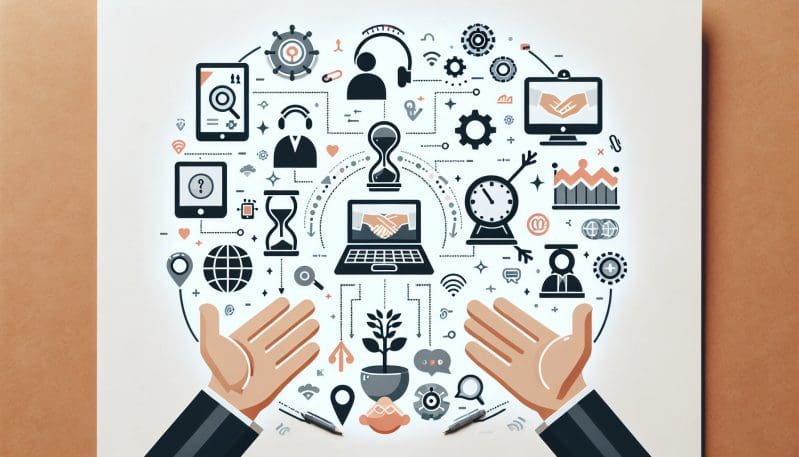Redefining Mentorship in the Age of Remote Work: Strategies for Cross-Generational Knowledge Transfer
- Home
- Redefining Mentorship in the Age of Remote Work: Strategies for Cross-Generational Knowledge Transfer
- Deeksha Joshi
- January 24, 2024
- 0 Comments
As the nature of work undergoes a seismic shift due to the rise of remote and hybrid work environments, the tried-and-true traditional mentorship models are encountering novel challenges. The quest to effectively bridge generational gaps and facilitate the seamless transfer of knowledge requires a fresh perspective, one that embraces the nuances of our increasingly digital workspace.
The cornerstone of traditional mentorship has been the face-to-face interaction that fosters trust and understanding. However, with more workers logging in from diverse locations, the physical aspect of mentorship cannot be relied upon as heavily as before. Instead, organizations must pivot and reimagine their mentorship programs to accommodate these flexible work arrangements while maintaining, or even enhancing, the benefits gained from intergenerational wisdom sharing.
The integration of digital tools has become essential in this adaptation. Video conferencing solutions like Zoom, Microsoft Teams, and Google Meet have facilitated real-time face-to-face interactions, while collaborative platforms like Slack and Asana allow for continuous communication that is less dependent on synchronous schedules. These tools democratize access to mentorship by removing geographical barriers, enabling more diverse pairings of mentors and mentees that were previously logistically unfeasible.
Moreover, the development of a mentorship culture that transcends physical boundaries is paramount. This includes creating an environment that encourages spontaneous interactions and knowledge sharing, promoting digital ‘water cooler’ moments, and providing training that equips both mentors and mentees with the skills to effectively communicate and collaborate remotely. To simulate the organic mentorship of the office environment, organizations can facilitate virtual coffee breaks or peer learning sessions, ensuring that the casual, yet vital, transfer of tacit knowledge persists.
Furthermore, fostering a culture of continuous learning and growth can help build a resilient and adaptable workforce. This means not only pairing experienced workers with those newer to the field but also flipping the script by recognizing that every generation has unique insights to offer. Reverse mentoring can be especially effective, pairing younger employees with seasoned professionals to share their adeptness with new technology and contemporary perspectives on workplace culture.
In evaluating these strategies, we find that the transfer of expertise does not have to be hindered by a lack of physical proximity. On the contrary, when well-designed, digital mentorship programs can preserve the essence of traditional mentorship while adding new dimensions of accessibility and inclusivity. By harnessing technology and fostering a culture that prioritizes mentorship as a key vehicle for knowledge transfer, organizations can nurture a workforce that is not only skilled and knowledgeable but also connected and engaged, despite the miles that may lie between them.
In conclusion, as we navigate the complexities of this new age of work, redefining mentorship is not just an option—it’s a necessity. By embracing flexibility, leveraging technology, and promoting a culture that values lifelong learning, we can ensure that our organizations remain strong, no matter what the future holds. The age of remote work challenges us to think differently about how we connect, but in doing so, it also offers us an unprecedented opportunity to reshape the very fabric of mentorship for the better.


Leave A Comment